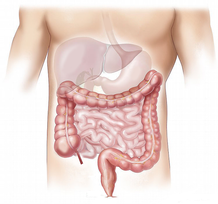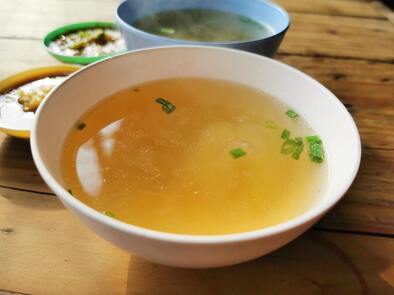 Leaky gut is a term used frequently nowadays, with little to no explanation of what it is and what can cause it. Is leaky gut even a real thing? Let’s dig into it: What is Leaky Gut? A leaky gut refers to a dysfunction of the intestinal lining and increased permeability of that lining. Normally, the gut is lined with cells that only allow certain substances to pass and prevent the absorption of potentially harmful substances and agents, like harmful bacteria, toxins, undigested food, or substances that can cause inflammation. With leaky gut, the gut lining is compromised in some areas, and substances mentioned above can pass between the intestinal cells (referred to as altered interstitial permeability) into the bloodstream more easily, which can cause inflammation throughout the body. Symptoms of leaky gut are shared with other health conditions that are correlated to leaky gut and can include:
What Causes Leaky Gut? Increased intestinal permeability or gaps between the cells lining the gut can be caused by many things, including:
Several diseases have been correlated to leaky gut and can be either a cause or effect of these diseases, including:
How to Heal Leaky Gut Here are a couple of things you can do to help heal your gut:
2. Probiotics Eating foods high in probiotics, such as yogurt, kefir, kimchi, sauerkraut, miso, etc., can improve intestinal cell barrier function by introducing more “good” bacteria into the gut, strengthening the intestinal mucosal barrier, improving antimicrobial activity, and reducing intestinal permeability. 3. Vitamins Vitamins A and D play a vital role in regulating gastrointestinal balance. Foods high in vitamin A include beef liver, egg yolks, dark-green leafy vegetables, and yellow and orange fruits and vegetables. Vitamin D is found in fatty fish, eggs, mushrooms, dairy, and orange juice fortified with vitamin D. 4. Fiber Eating adequate fiber is essential to ensure that our microbiome is being fed. Fiber has anti-inflammatory properties and helps regulate the intestinal barrier. Fiber is found in plant foods such as fruits, vegetables, beans, legumes, nuts and seeds. We need between 25 and 38 grams of fiber daily. 5. Medicinal herbs Certain medicinal herbs can have a soothing and healing effect on the GI system, including slippery elm, green tea, licorice, marshmallow, ginger, peppermint, and plantain. A great way to take advantage of the benefits of these herbs is by making tea from them. 6. Glutamine Glutamine is an amino acid that is critical in healing the gut lining, as it helps build the membrane of intestinal cells. Bone broth is a food that is high in glutamine and can be used to help heal the gut. Below, you will find a recipe for bone broth. *Bone broth may be unsuitable for those following a low FODMAP diet unless the recipe or product uses low FODMAP ingredients.  Pho-Inspired Bone Broth Recipe Recipe makes 3 quarts - 2 lbs chicken feet - 12 cups water - 1 1-inch piece of ginger, chopped - 3-4 garlic cloves, crushed - 6-8 whole black peppercorns - 1 cinnamon stick - 1 star anise - 5-8 coriander seeds (optional) - 2 bay leaves - 1 onion, cut into quarters - 2 stalks of celery, chopped - 1 carrot, chopped - 1 teaspoon salt, or more to taste Add all the ingredients to a stock pot or a crock pot and cover with the water, leaving an inch of space at the top. If using a crock pot, add all the ingredients except carrot, onion, and celery (add these in the last 6-8 hours of cooking). Cover with a lid and cook on low for at least 4 hours if cooking on the stovetop or 24 hours using a crock pot. Once the broth is done, use a strainer to filter out the solid ingredients. Add salt. Once the broth is cold, it may have a layer of fat at the top that can be removed. Store in the fridge or freezer. Nutrition per cup: 50 calories, 0g fat, 9 g protein, 2 g carbohydrates, 194 mg sodium, 0 g fiber Overall, there are many things you can do to support your gut health and heal your gut lining if it is damaged. Treating leaky gut is individualized and should be catered to your specific issues and symptoms. We recommend working with your doctor and a dietitian to come up with a treatment that is right for you! Anca Soloschi, Dietetic Intern References:
Camilleri M. Leaky gut: mechanisms, measurement and clinical implications in humans. Gut. 2019 Aug;68(8):1516-1526. doi: 10.1136/gutjnl-2019-318427. Epub 2019 May 10. PMID: 31076401; PMCID: PMC6790068. Allan S. What is leaky gut syndrome? Canadian Digestive Health Foundation. November 29, 2022. Accessed October 27, 2023. https://cdhf.ca/en/what-is-leaky-gut-syndrome/. Aleman RS, Moncada M, Aryana KJ. Leaky gut and the ingredients that help treat it: A Review. Molecules (Basel, Switzerland). January 7, 2023. Accessed October 20, 2023. https://www.ncbi.nlm.nih.gov/pmc/articles/PMC9862683/. National Research Council (US) Committee on Diet and Health. Diet and Health: Implications for Reducing Chronic Disease Risk. Washington (DC): National Academies Press (US); 1989. 11, Fat-Soluble Vitamins. Available from: https://www.ncbi.nlm.nih.gov/books/NBK218749/ Foundation P by: M. Boundless benefits of beautiful bone broth. Mindd. May 3, 2018. Accessed October 20, 2023. https://mindd.org/beautiful-benefits-bone-broth/.
0 Comments
Leave a Reply. |
SD BlogA place for our consultant Registered Dietitian Nutritionists (RDNs) to share nutrition science, yummy and healthy recipes, tips on seasonal ingredients, and other nutritional musings. Enjoy! Categories
All
Archives
May 2024
|




 RSS Feed
RSS Feed